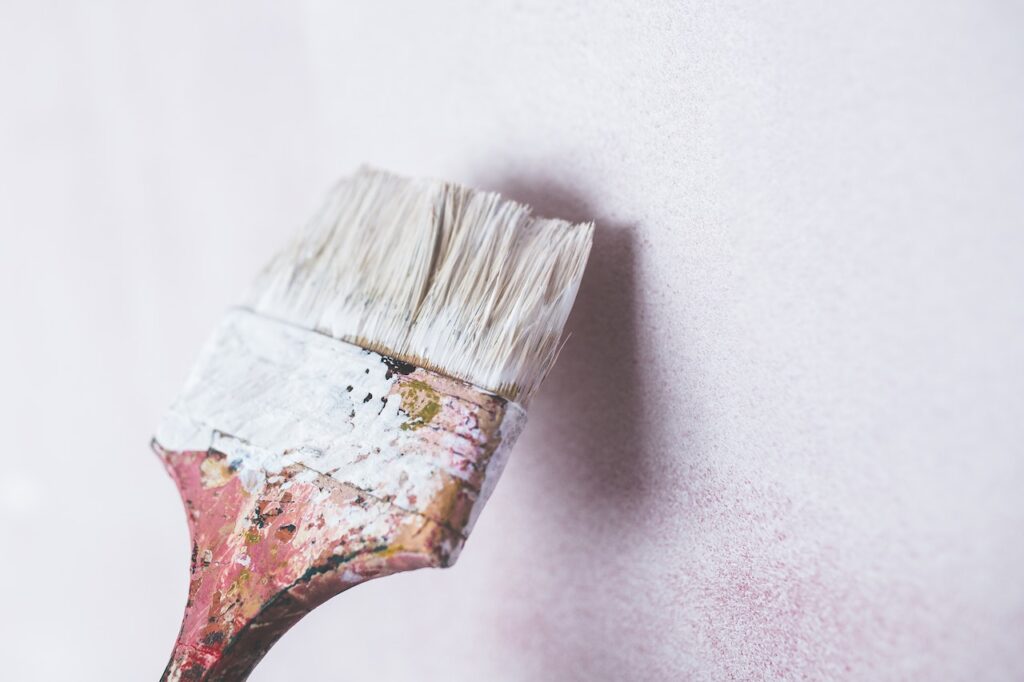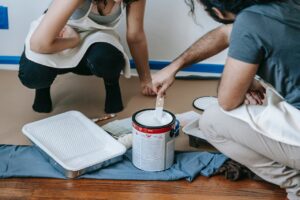Table of Contents
ToggleIntroduction: The Importance Of Hiring The Right Exterior House Painting Contractor
Hiring the right exterior house painting contractor can make all the difference in the outcome of your painting project. A professional painting contractor can ensure that the project is completed efficiently, effectively, and with minimal disruption to your daily routine. In contrast, an inexperienced or unreliable contractor can leave you with shoddy workmanship, missed deadlines, and unexpected costs. Choosing the right contractor is a critical decision that requires careful research, evaluation, and preparation. In this article, we’ll provide you with a comprehensive guide to hiring the right exterior house painting contractor and ensuring the success of your painting project.
Researching And Evaluating Potential Contractors
Researching and evaluating potential exterior house painting contractors is an essential step in the hiring process. There are several ways to find potential contractors, including online searches, recommendations from friends and family, and referrals from professional organizations like the Painting Contractors Association. Once you have a list of potential contractors, it’s important to research each one thoroughly. Start by checking their website and online reviews to get a sense of their experience, reputation, and areas of expertise. You can also check their license and insurance status with your state licensing board.
Next, contact each contractor and ask for references. A reputable contractor will be happy to provide you with a list of past clients who can vouch for their work. Contact these references and ask about their experience working with the contractor, including their communication skills, timeliness, and overall quality of work. Finally, schedule a meeting with each contractor to discuss your project in detail. During this meeting, pay attention to their communication style, professionalism, and willingness to listen to your needs and concerns. A good contractor will take the time to understand your goals and offer recommendations based on their experience and expertise.
Questions To Ask When Interviewing Exterior House Painting Contractors
When it comes to hiring an exterior house painting contractor, asking the right questions can make all the difference. Here are some important questions to ask when interviewing potential contractors:
1. Can You Provide References Or Examples Of Your Previous Work?
This question can give you a sense of the contractor’s experience and the quality of their work. Look for examples of similar projects to your own to get a better idea of what to expect.
2. Are You Licensed And Insured?
Make sure the contractor is licensed to work in your area and has liability insurance to cover any damage or accidents that may occur on the job.
3. What Is Your Experience In Exterior House Painting?
Experience matters when it comes to house painting, so ask the contractor about their experience with similar projects.
4. What Kind Of Preparation Work Do You Do Before Painting?
Proper preparation is essential for a successful paint job, so ask the contractor about their prep work process, including cleaning, sanding, and priming.
5. What Kind Of Paint And Materials Do You Use?
The quality of the paint and materials used can impact the longevity and appearance of your paint job, so make sure the contractor uses high-quality products.
6. Do You Offer Any Warranties Or Guarantees For Your Work?
A reputable contractor should offer a warranty or guarantee for their work to ensure customer satisfaction and peace of mind.
7. How Do You Handle Unexpected Issues That May Arise During The Project?
It’s important to know how the contractor will handle unexpected issues, such as weather delays or unforeseen damage, to avoid surprises or additional costs.
8. What Is Your Estimated Timeline For The Project?
Having a clear timeline can help you plan accordingly and avoid any unexpected delays.
9. How Do You Communicate With Clients During The Project?
Good communication is key to a successful project, so ask the contractor about their communication process and how often you can expect updates.
10. What Is The Total Cost Of The Project, Including Any Additional Fees Or Charges?
Make sure to get a detailed estimate that includes all costs, such as labor, materials, and any additional fees or charges, so you can budget accordingly.
Evaluating Quotes And Contracts
When hiring an exterior house painting contractor, it is important to obtain multiple quotes and evaluate them carefully. Look for a detailed breakdown of costs and materials in the quote. Make sure the quote includes everything discussed during the initial consultation, such as the number of coats of paint, preparation work, and clean-up.
Once you have chosen a contractor, be sure to review and sign a contract before work begins. A contract should include a detailed scope of work, payment terms, timeline, and warranty information. Make sure you understand all the terms of the contract and ask any questions you may have before signing. It is important to have a written agreement in place to protect both you and the contractor.
Preparing For The Painting Project
Preparing for an exterior house painting project is crucial to ensure that the project runs smoothly and efficiently. This includes making any necessary repairs or replacements before the painting begins, clearing the work area of any obstacles, and protecting any landscaping or outdoor fixtures. It is also important to communicate with the painting contractor about any special instructions or considerations, such as areas that need to be painted a specific color or special coatings that need to be applied. Additionally, homeowners should plan for the inconvenience of the project, including scheduling around the painting timeline and making arrangements for pets and children. Adequate preparation can make a significant difference in the success and outcome of the project.
Tips For Managing The Painting Project
Here are some tips for managing the painting project with your contractor:
1. Set Clear Expectations: Before the project begins, communicate your expectations with the contractor in terms of the scope of work, timeline, and budget.
2. Schedule Regular Check-Ins: Throughout the project, schedule regular check-ins with the contractor to ensure everything is on track and address any concerns or issues that arise.
3. Review Work As It Progresses: Review the work as it progresses to ensure that the contractor is meeting your expectations and that the work is being done to your satisfaction.
4. Communicate Any Changes Or Concerns Promptly: If any changes or concerns arise during the project, communicate them to the contractor promptly to avoid any delays or misunderstandings.
5. Make Final Inspection And Payment: Once the project is complete, do a final inspection of the work to ensure that everything is done to your satisfaction. Then, make the final payment to the contractor.
By following these tips, you can ensure that your painting project is managed effectively and that you are happy with the final result.
Final Inspections And Payments
Once the painting project is completed, it is important to conduct a final inspection of the work done by the contractor. This includes checking for any missed spots or areas where the paint may have dripped or pooled. It is also important to ensure that the final result matches the expectations and requirements set out in the contract. Once any issues have been addressed, it is time to make the final payment to the contractor. It is essential to adhere to the payment schedule outlined in the contract and only make the final payment once all work has been completed to satisfaction.
Conclusion: Ensuring Success With The Right Exterior House Painting Contractor
Hiring the right exterior house painting contractor is crucial to ensure the success of your painting project. It is essential to research and evaluate potential contractors carefully, including checking their credentials, experience, and references. When interviewing contractors, it is crucial to ask the right questions about their processes, materials, and techniques to determine if they are a good fit for your project. Evaluating quotes and contracts is also an essential part of the process to ensure that you understand the scope of the project and all costs involved.
Proper preparation for the project, including scheduling and clear communication, can help manage the project’s timeline and ensure a successful outcome. Finally, conducting final inspections and making payments only when the work is complete can help ensure your satisfaction with the finished product. By following these tips, you can hire the right exterior house painting contractor and ensure a successful and stress-free painting project.
Our Experts’ Take
Experts highly recommend reading the article on “How To Hire The Right Exterior House Painting Contractor” before starting any painting project. The article covers important aspects that homeowners need to consider in order to ensure the success of their exterior painting project. The importance of researching and evaluating potential contractors cannot be overstated, as it is the foundation for a successful project. Furthermore, the questions to ask when interviewing contractors are crucial to gain a better understanding of the contractor’s skills and expertise.
The article also provides valuable tips for evaluating quotes and contracts, which is an essential part of the process. This will help ensure that both the homeowner and contractor are on the same page regarding expectations and deliverables. Preparing for the painting project is equally important, and the article provides useful suggestions for homeowners to ensure a smooth and efficient project. The tips for managing the painting project will help homeowners stay on track and ensure that the project is completed on time and on budget.
Finally, the article emphasizes the importance of final inspections and payments. This will ensure that the project has been completed to the homeowner’s satisfaction and that the contractor is paid in full for their services. Overall, this article is an excellent resource for homeowners looking to hire the right exterior house painting contractor and ensure the success of their painting project.
Do You Need A Professional House Painting Team You Can Trust?
Refresh your home and space with the experts at PaintMasters! Since 1994, PaintMasters has been the top residential and commercial painting company in Concord, California. We proudly serve Lamorinda, Tri-Valley, Contra Costa, and the surrounding areas. With our cutting-edge technology, unparalleled expertise, and state-of-the-art 15,000 CFM spray booth, you can be sure that your cabinets will receive a top-notch finish. Our team of experienced professionals is expert in painting interior and exterior custom homes plus decks, acoustic removal, drywall repair, and texturing – so you can trust that it’s done right the first time.
We also specialize in staining for interior or exterior walls, cabinets, doors, decks, and other woodwork for both homes and commercial projects such as office spaces and restaurants. Whether you need to refresh a tired old room or give a new room an individual touch of style – PaintMasters is here to help. We are dedicated to delivering a flawless finish on every project with our unique blend of design instinct and technical skills certified by our professional results.


